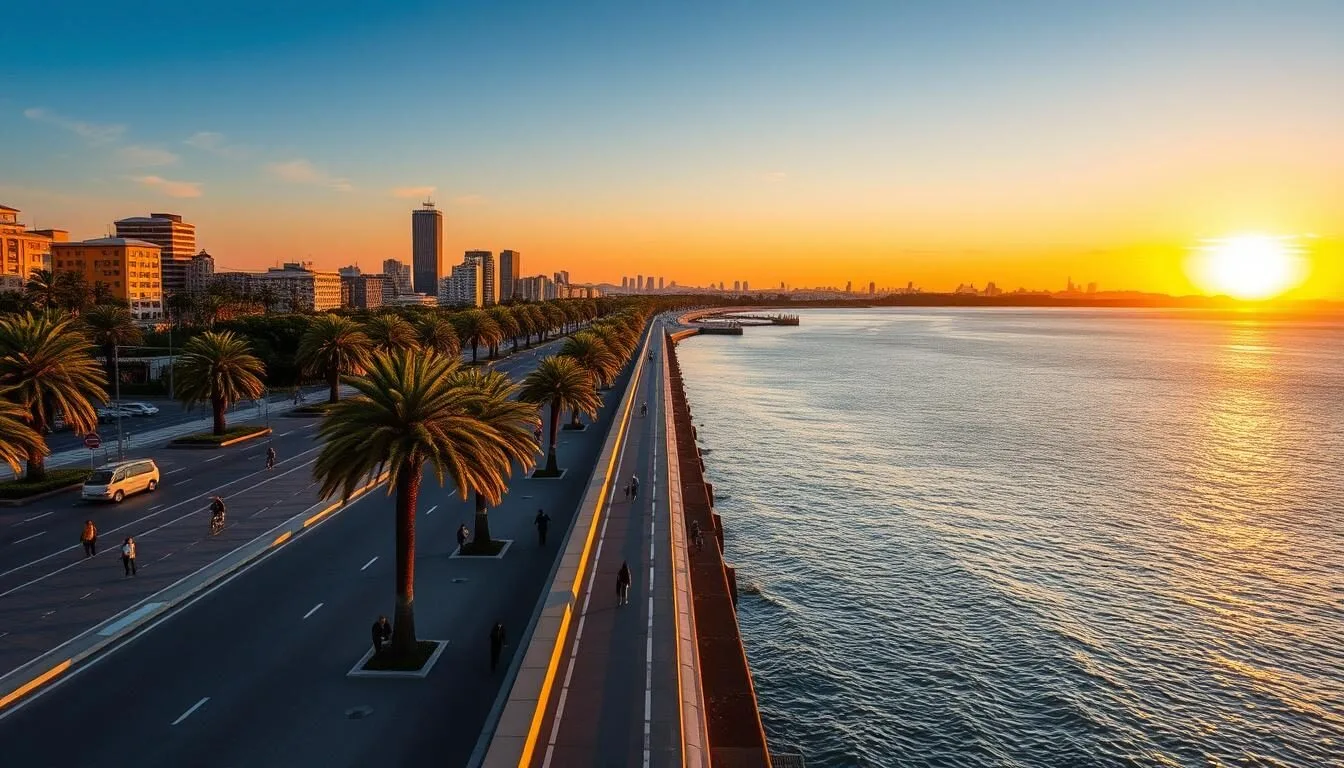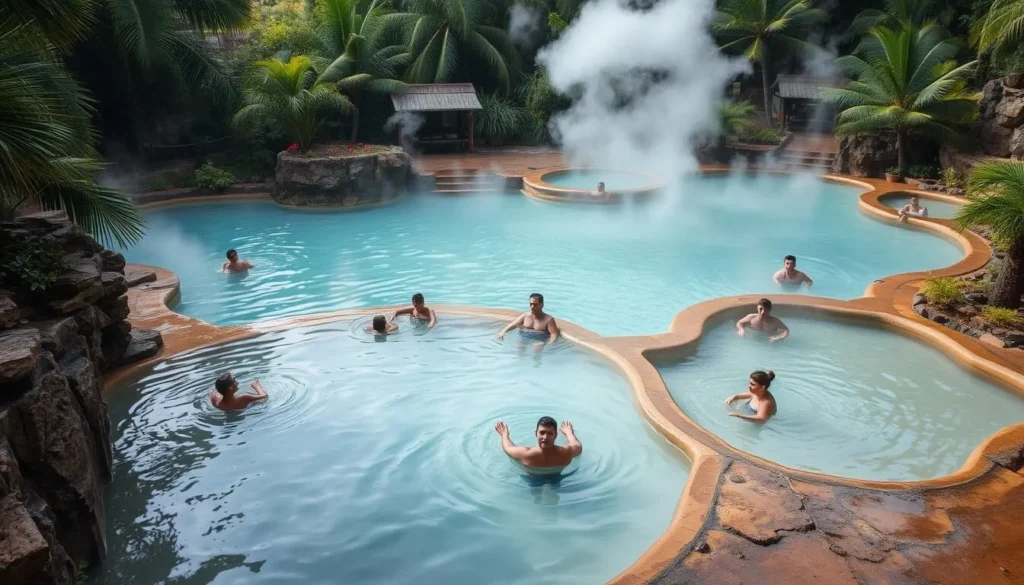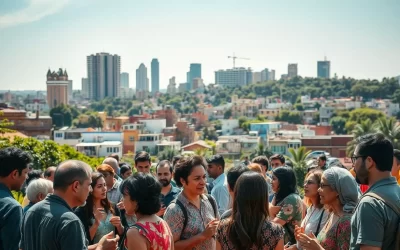Did you know Uruguay is the only country in South America where the entire population has access to clean drinking water? This progressive nation, nestled between Brazil and Argentina, might be South America’s best-kept secret. With its pristine beaches, vibrant culture, and remarkably safe cities, Uruguay offers travelers an authentic experience without the crowds of its larger neighbors.
Getting to Uruguay
Most international travelers arrive in Uruguay through Carrasco International Airport in Montevideo. Direct flights connect the capital with major cities in South America, Europe, and the United States. Alternatively, you can take a ferry from Buenos Aires, Argentina to either Montevideo or Colonia del Sacramento – a scenic 1-3 hour journey across the Rio de la Plata.
Entry requirements are straightforward for most visitors. Citizens from many countries, including the US, Canada, and EU nations, can enter Uruguay without a visa for up to 90 days. Just ensure your passport is valid for at least six months beyond your planned departure date.
Ready to Book Your Flight to Uruguay?
Find the best deals on flights to Montevideo from major international airports.
Best Time to Visit Uruguay
Uruguay experiences four distinct seasons, with the summer months (December to March) being the most popular time to visit. During this period, coastal towns come alive, beaches fill with sunbathers, and temperatures range from 75°F to 85°F (24°C to 29°C).
For fewer crowds and pleasant weather, consider visiting during the shoulder seasons of October-November or April-May. Winter (June to September) brings cooler temperatures between 50°F and 60°F (10°C to 15°C), but many coastal establishments close during this quieter period.

Getting Around Uruguay
Uruguay’s compact size makes it relatively easy to explore. The country has an excellent bus network connecting major cities and towns, with comfortable coaches and frequent departures. For ultimate flexibility, renting a car is highly recommended, especially if you plan to visit rural areas or beach towns off the main routes.
Roads are generally well-maintained, and traffic is manageable even in Montevideo. Within cities, taxis and rideshare services are readily available. In Montevideo, the public bus system is efficient and affordable for getting around the capital.
Explore Uruguay at Your Own Pace
Rent a car and discover hidden gems throughout this beautiful country.
Where to Stay in Uruguay
Uruguay offers accommodations for every budget and preference. In Montevideo, choose between modern hotels in the downtown area or boutique options in the historic Ciudad Vieja (Old City). Punta del Este features luxury resorts and upscale apartments, while José Ignacio offers exclusive boutique hotels and private villas.
For a unique experience, consider staying at an estancia (traditional ranch) in Uruguay’s countryside. These working farms offer an authentic glimpse into rural life, often with horseback riding, home-cooked meals, and warm hospitality.

Find Your Perfect Stay in Uruguay
Browse hotels, vacation rentals, and unique accommodations across Uruguay.
Exploring Montevideo
Uruguay’s capital is a vibrant blend of historic charm and modern energy. With nearly half the country’s population calling it home, Montevideo offers a rich cultural experience without the overwhelming pace of larger South American capitals.

Ciudad Vieja (Old City)
Start your exploration in the historic district, where colonial buildings line cobblestone streets. Visit Plaza Independencia, home to the impressive Palacio Salvo and the mausoleum of national hero José Artigas. Nearby, the Mercado del Puerto is a carnivore’s paradise – this former port market now houses numerous parrillas (grills) serving Uruguay’s famous beef alongside local wines.
The Rambla
This 22-kilometer waterfront promenade is the longest continuous sidewalk in the world. Join locals for a stroll, bike ride, or simply to sip mate (traditional herbal tea) while watching the sunset over Rio de la Plata. The Rambla connects several beaches, including Playa Pocitos and Playa Ramírez, perfect for a refreshing swim during summer months.
Cultural Attractions
Don’t miss the Teatro Solís, Uruguay’s oldest theater, and the Museo Nacional de Artes Visuales, which houses an impressive collection of Uruguayan art. For a unique experience, take an Afro-Uruguayan percussion lesson to learn about candombe, the rhythmic music with roots in African traditions that forms an important part of Uruguayan cultural identity.
Discover Montevideo’s Hidden Gems
Book guided tours, cooking classes, and cultural experiences in Uruguay’s vibrant capital.
Punta del Este: Uruguay’s Premier Beach Resort
Often called the “Monaco of South America,” Punta del Este transforms from a quiet peninsula town to a buzzing international resort during summer months. With beaches on both sides – the calmer River Plate to the west and the more vigorous Atlantic Ocean to the east – it caters to all types of beach enthusiasts.

Iconic Attractions
The most photographed spot is undoubtedly “La Mano” (The Hand) – a massive sculpture of fingers emerging from the sand at Playa Brava. For panoramic views, climb to the top of the Punta del Este Lighthouse, dating back to 1860. Art enthusiasts should visit Casapueblo in nearby Punta Ballena, the dazzling white Mediterranean-style building created by Uruguayan artist Carlos Páez Vilaró.
Beaches and Water Activities
Choose between the gentle waters of Playa Mansa (“Calm Beach”) or the more energetic waves of Playa Brava (“Fierce Beach”). For a more exclusive experience, head to the beaches of La Barra or José Ignacio, where celebrities and the fashion-forward crowd gather during high season. Water sports enthusiasts can enjoy surfing, kiteboarding, and sailing throughout the area.
Day Trips
Take a boat excursion to Isla de Lobos, home to the largest sea lion colony in the Western Hemisphere. Or venture inland to Bodega Garzón, a world-class winery producing exceptional Tannat wines amid rolling hills with stunning views.
Colonia del Sacramento: A Step Back in Time
Just a short ferry ride from Buenos Aires, this UNESCO World Heritage Site charms visitors with its preserved colonial architecture and relaxed atmosphere. Founded by the Portuguese in 1680, Colonia’s historic quarter features a unique blend of Portuguese and Spanish influences.

Historic Quarter
Wander through the Barrio Histórico’s narrow cobblestone streets, where colonial-era buildings house museums, galleries, and cafés. Don’t miss the Street of Sighs (Calle de los Suspiros), the city’s most photographed lane. Climb the 1857 lighthouse for panoramic views of the old town and Rio de la Plata, or explore the ruins of the Convento de San Francisco.
Museums and Culture
Visit the Portuguese Museum, housed in a 18th-century building, to learn about Colonia’s complex history. The Municipal Museum showcases indigenous artifacts and colonial relics, while the Tile Museum displays beautiful ceramic pieces from the region. For something unique, check out the quirky Museo del Automóvil, featuring vintage cars that seem frozen in time on Colonia’s streets.
Relaxation
Colonia’s unhurried pace makes it perfect for relaxation. Enjoy a leisurely lunch at a waterfront restaurant, sipping local wines while watching boats on the river. Or find a spot along the Rambla to witness one of Uruguay’s spectacular sunsets over the water – a perfect end to a day of exploration.
Experience Historic Colonia
Book guided walking tours, museum passes, and day trips to this UNESCO World Heritage site.
Cabo Polonio: Off-Grid Paradise
For a truly unique experience, venture to Cabo Polonio, an isolated village within Cabo Polonio National Park. With no roads, running water, or conventional electricity, this bohemian enclave offers an escape from modern life amid stunning natural beauty.

Getting There
The adventure begins with the journey itself. From the highway, specially equipped vehicles traverse massive sand dunes to reach the village – a 20-minute ride through a surreal landscape. Alternatively, you can hike approximately 7 kilometers from Barra de Valizas through the dunes for a more immersive experience.
Natural Attractions
Explore pristine beaches where you might spot dolphins playing offshore. The rocky point is home to one of South America’s largest sea lion colonies – their barks provide a constant soundtrack to your visit. Between July and November, you might even glimpse whales migrating along the coast. For panoramic views, climb the 1881 lighthouse, one of the few structures with electricity.
Sustainable Living
With solar panels and wind turbines providing limited power, Cabo Polonio offers insight into sustainable living. Accommodations range from rustic hostels to simple cabañas, most with candlelight after dark. The lack of light pollution makes for spectacular stargazing – on clear nights, the Milky Way stretches dramatically across the sky.
Uruguay’s Wine Country
Uruguay may be South America’s fourth-largest wine producer, but what it lacks in quantity, it makes up for in quality. The country’s signature grape, Tannat, produces robust reds with distinctive character. Wine regions are scattered throughout the country, with each offering unique tasting experiences.

Carmelo
In western Uruguay near the Argentine border, Carmelo is home to several boutique wineries producing exceptional wines. Visit family-run establishments like Bodega El Legado, where traditional methods blend with modern techniques. Many wineries offer tours followed by tastings paired with local cheeses and charcuterie.
Canelones
Just outside Montevideo, Canelones is Uruguay’s largest wine region, producing about 60% of the country’s wines. Tour historic wineries like Bodega Bouza, where you can combine wine tasting with a visit to their vintage car collection, or Establecimiento Juanicó, one of the country’s oldest wineries dating back to 1830.
Maldonado
The newer wine region of Maldonado, near Punta del Este, is gaining international recognition for its high-quality wines. Visit Bodega Garzón, a state-of-the-art sustainable winery with stunning hilltop views, or Viña Edén, where you can enjoy a gourmet lunch paired with their award-winning wines.
Discover Uruguay’s Wine Culture
Book winery tours, tastings, and culinary experiences throughout Uruguay’s wine regions.
Uruguayan Cuisine
Uruguayan food reflects the country’s European heritage, particularly Spanish and Italian influences, combined with indigenous traditions. Meat plays a central role, with the asado (barbecue) being both a cooking technique and a social event.

Must-Try Dishes
The chivito is Uruguay’s national sandwich – a hearty combination of thinly sliced steak, ham, cheese, lettuce, tomato, and a fried egg, often served with fries. Milanesa, a breaded and fried beef cutlet, is another staple. For dessert, try dulce de leche in various forms, from alfajores (cookie sandwiches) to flan con dulce de leche.
Mate Culture
Uruguayans consume more mate per capita than any other nation. This caffeine-rich herbal infusion is sipped through a metal straw (bombilla) from a gourd cup, often shared among friends. You’ll see locals everywhere carrying their thermos and mate cup – it’s more than a beverage, it’s a social ritual and cultural symbol.
Where to Eat
In Montevideo, the Mercado del Puerto houses numerous parrillas serving exceptional grilled meats. For seafood, coastal towns like Punta del Este and José Ignacio offer fresh catches prepared with Mediterranean influences. Don’t miss the opportunity to dine at an estancia for home-cooked rural cuisine featuring locally raised ingredients.
Practical Tips for Visiting Uruguay

Money Matters
The Uruguayan Peso (UYU) is the local currency. Credit cards are widely accepted in cities and tourist areas, but carry cash for smaller establishments and rural locations. ATMs are readily available in urban areas. Uruguay is more expensive than many South American countries, with prices closer to European standards, especially in tourist destinations during high season.
Safety
Uruguay consistently ranks as one of the safest countries in South America. Violent crime is rare, though take normal precautions against petty theft in tourist areas. The tap water is safe to drink throughout the country – Uruguay is the only nation in Latin America with universal access to clean water.
Cultural Etiquette
Uruguayans are generally relaxed and friendly. Greetings typically involve a kiss on the cheek, even among people meeting for the first time. If invited to share mate, it’s considered impolite to refuse – just remember not to say “gracias” until you’re finished, as this indicates you don’t want any more.
Why Uruguay Should Be Your Next Destination
Uruguay may be small in size, but it delivers an authentic South American experience with European flair. From the vibrant streets of Montevideo to the pristine beaches of Rocha, from world-class wineries to off-grid coastal villages, Uruguay offers diverse experiences in a compact, accessible package.
What makes Uruguay truly special is its authenticity. Here, you’ll find South American traditions without the tourist crowds, beautiful beaches without the high-rise developments, and warm hospitality from people proud to share their culture. Whether you’re sipping mate with locals on the Rambla, savoring a leisurely asado lunch, or watching the sunset from a remote lighthouse, Uruguay invites you to slow down and appreciate life’s simple pleasures.
Ready to discover South America’s hidden gem? Uruguay awaits with open arms and unforgettable experiences.
Start Planning Your Uruguay Adventure
Find flights, accommodations, and experiences for your perfect Uruguay getaway.



